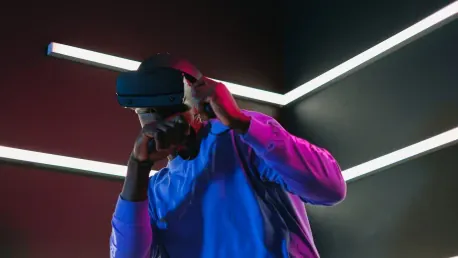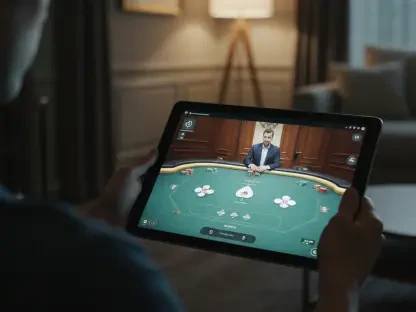Samsung is gearing up for a significant foray into the Extended Reality (XR) market with its rumored XR glasses, expected to be teased at the Galaxy S25 launch event in January 2025. According to a report by South Korea’s Yonhap, these glasses will be introduced through a video or image rather than as physical prototypes, following a similar phased reveal strategy Samsung used for its Galaxy Ring. This calculated approach is designed to build interest and anticipation among consumers and tech enthusiasts.
Key Features of Samsung’s XR Glasses
Sleek and Lightweight Design
One of the most anticipated aspects of Samsung’s rumored XR glasses is their sleek and lightweight design, weighing just 50 grams and resembling ordinary sunglasses. This represents a notable shift from the bulky designs often associated with previous AR and VR headsets, making them more appealing for everyday use. Users are eager to experience a device that not only offers cutting-edge technology but also fits seamlessly into daily life without causing discomfort or drawing undue attention.
The lightweight nature of these glasses is expected to be complemented by advanced AI-powered capabilities. Features like facial recognition for security and gesture recognition for navigation aim to provide an intuitive and hands-free user experience. These developments suggest that Samsung is focusing on creating a product that is not only technologically advanced but also user-friendly and practical for everyday consumers. There is also speculation about payment functionality being integrated into the glasses, which could offer a convenient and futuristic way to handle transactions, although specific details on this feature remain scant.
Advanced Sensors and Internal Specifications
Internally, the XR glasses are likely to feature an array of advanced sensors and cutting-edge technology to enhance their functionality and user experience. A rumored 12MP Sony CMOS sensor could play a pivotal role in enabling gesture controls and QR code recognition, adding to the glasses’ utility and versatility. These sensor capabilities stand to elevate the device’s interaction methods, providing users with a more seamless and interactive experience through intuitive controls.
For processing power, the glasses are expected to incorporate Qualcomm’s AR1 chipset, which is designed specifically for augmented reality applications. This will be supported by an NXP chip that could handle additional tasks, ensuring that the glasses deliver robust performance and reliable functionality. However, one potential challenge that has been highlighted is the 155mAh battery capacity, which may not be sufficient for sustained usage throughout the day. This presents a critical area for Samsung to address, as balancing advanced functionalities with battery efficiency will be crucial to the glasses’ success in the market.
Samsung’s XR Software Platform
Foundation for a Seamless Experience
Before unveiling the hardware, Samsung plans to announce its XR software platform, which is expected to serve as the foundation for a seamless experience across a range of AR, VR, and mixed-reality devices. This platform aims to support various use cases within the extended reality spectrum, providing a cohesive ecosystem for both developers and users. By establishing a robust software platform, Samsung endeavors to create a unified environment that enhances the overall user experience and fosters innovation within the XR market.
The software platform, initially referred to as being for AR devices, is anticipated to enable mixed reality functionality as well. This means that while users may initially access augmented reality applications, the underlying technology can support a broader array of immersive experiences. Samsung’s commitment to developing a versatile software platform highlights its strategic approach to entering the XR market, ensuring that its products offer not just hardware advancements but also a rich and adaptable software environment.
Teasing Strategy and Market Position
Samsung’s entry into the XR market comes amidst fierce competition from tech giants like Meta and Apple. To distinguish itself, Samsung has adopted a strategic teasing and phased reveal approach. By introducing the XR glasses through video or images rather than physical prototypes, the company aims to build anticipation and generate buzz prior to the actual product launch. This method mirrors the successful strategy used for the Galaxy Ring, where gradual reveals maintained interest and excitement among potential consumers.
The partnership with Google and Qualcomm further positions Samsung favorably in the XR space. However, the company must deliver on both usability and innovation to stand out. The emphasis on a lightweight design and AI-powered features suggests that Samsung is targeting not just tech enthusiasts but also everyday consumers looking for practical and seamless XR solutions. As the market for XR devices continues to evolve, Samsung’s approach of carefully crafting and presenting its products could play a crucial role in establishing its presence and influence in this competitive landscape.
Commercial Availability and Future Prospects
Strategic Product Rollout
Samsung’s strategic approach of teasing and gradually rolling out its XR glasses aims to generate significant buzz and set expectations in this rapidly evolving market. The XR glasses are expected to be commercially available in Q3 2025, which allows Samsung ample time to refine the technology and build anticipation among consumers. This phased reveal strategy not only heightens excitement but also provides Samsung with valuable feedback and insights during the lead-up to the official launch.
By taking the time to perfect the product and ensure it meets consumer expectations, Samsung is positioning itself to make a substantial impact upon release. This methodical approach helps to manage and cultivate interest, ensuring that when the XR glasses are finally available to the public, they are not just another entry into the market but a well-polished and highly anticipated device that addresses user needs and expectations.
Navigating Market Challenges
Samsung is preparing for a substantial entry into the Extended Reality (XR) market with its anticipated XR glasses. These glasses are expected to be teased around the time of the Galaxy S25 launch, scheduled for January 2025. According to a report from Yonhap, a South Korean news outlet, the initial introduction of these XR glasses will likely take place through a video or image rather than showcasing physical prototypes.
This strategy mirrors the approach Samsung adopted for the reveal of its Galaxy Ring, aiming to generate consumer interest and create a buzz among tech enthusiasts. By rolling out their product in stages, Samsung effectively keeps the audience engaged and curious, building up anticipation for the eventual release.
The XR market is becoming increasingly competitive, and Samsung’s calculated approach indicates their intention to make a strong impression. The upcoming XR glasses could offer new ways for users to experience augmented and virtual realities, thus potentially expanding Samsung’s influence in the advancing tech landscape.









